Extreme cold weather conditions can significantly affect the quality of concrete, as well as its mechanical properties. In cold weather concreting, one should make sure that all the negative impacts of low ambient temperature are appropriately alleviated by taking the necessary precautions. In this article, we will review important steps that can ensure you will get the quality you are looking for. But first, let’s see what cold temperature is for concrete, and why it is critical.
- Cold Weather Concreting
Exposure to cold weather can have serious consequences on the Strength Gain, as well as the shot and long-term durability performance of concrete materials. In order to meet and exceed the minimum design requirements (sufficient strength and durability), it is important to protect concrete during the mix process, transportation, placement, and curing to avoid low strength and sub-standard durability properties. Codes and guidelines provide general recommendations for concreting in the cold weather. In this article, we will review the guidelines in Canada and the United States.
1- CSA A 23-1
In Canada, where temperatures tend to be quite low during the cold season. the following criteria is set by the CSA A23.1:
1- When the air temperature is ≤ 5 °C, and
2- When there is a probability that the temperature may fall below 5°C within 24 hours of placing the concrete.
2- ACI 306
American Concrete Institute definition of cold weather concreting, ACI 306, is:
1- A period when for more than three successive days the average daily air temperature drops below 40 ˚F (~ 4.5 °C) , and
2- Temperature stays below 50 ˚F (10 °C) for more than one-half of any 24 hour period.
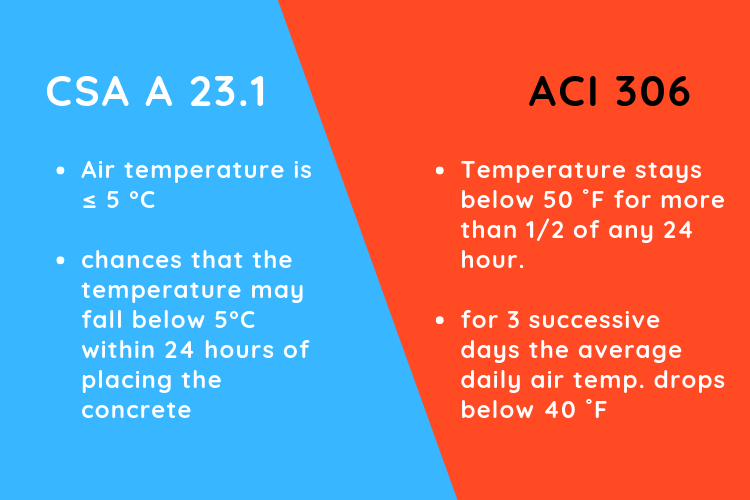
Why Cold Weather Concreting is Challenging?
The hydration of cement is a chemical reaction. Extremely low temperatures as well as freezing can significantly slow down the reactions, thus, affecting the strength growth. In fact, freezing temperatures within the first 24 hours (or when concrete is still in plastic state), can reduce the strength by more than 50%. The minimum strength before exposing concrete to extreme cold is 500 psi (3.5 MPa). CSA A 23.1 specified a compressive strength of 7.0 MPa to be considered safe for exposure to freezing.
How to Protect Concrete In Cold Weather?
When concrete is properly produced, placed, and protected during cold weather, it will develop sufficient strength and durability to satisfy the intended service requirements (ACI Website). The following steps will help concrete suppliers and contactors in meeting project specifications:
1- Removing Ice and Snow
It is important to remove any ice or snow from the surface of formworks and rebar. This is specially important in the construction of slabs (with large exposed area).

2- Heating Water and/or Aggregates
It is important to order concrete with temperature between 10 °C – 25 °C. Concrete suppliers can achieve this either by heating water or aggregate; however, heating cement is not considered as effective.
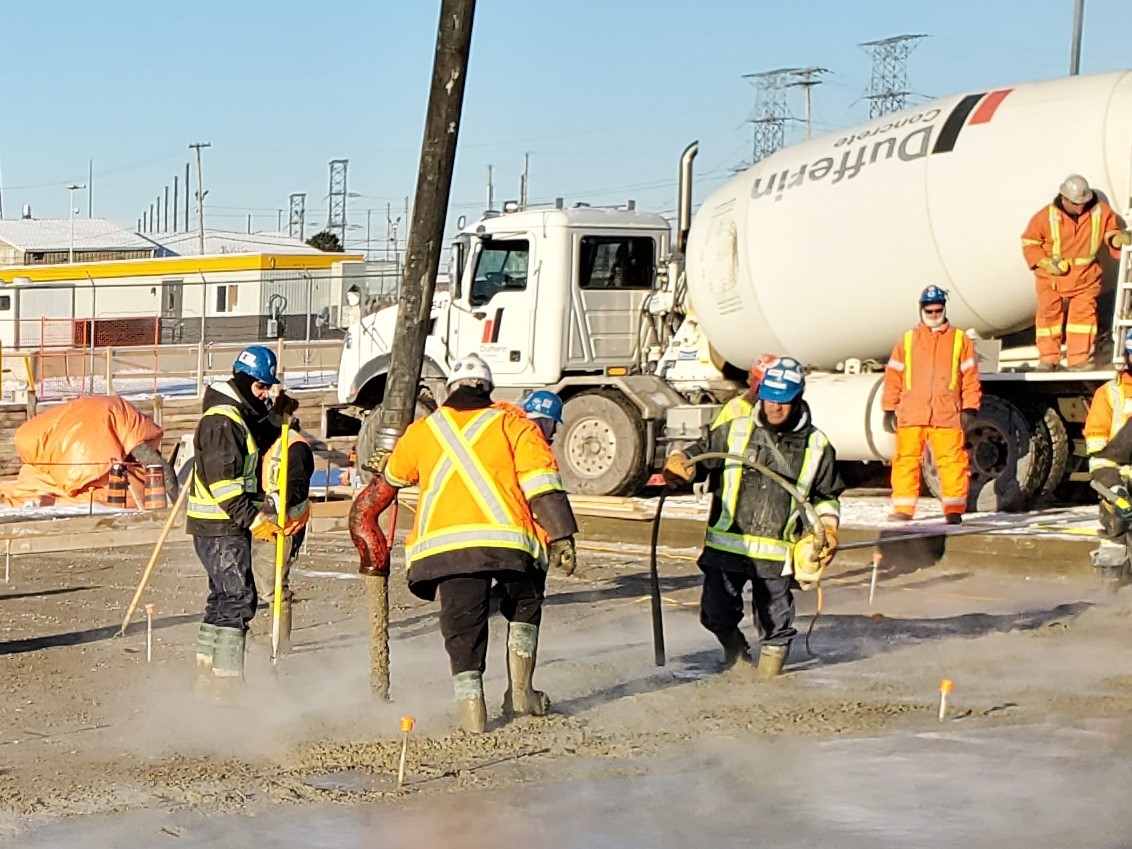
3- Slab formwork temperature
Placing warm concrete over cold surface of formwork can result in integrity problems in concrete and low strength. It is recommended to warm up formworks prior to placing concrete.
Slab thickness < 1.0 m : 10 °C
Slab thickness > 1.0 m : 5 °C
4- Protect Concrete
CSA A23.1 specified that protection shall be provided by means of:
- Heated enclosures
- Coverings
- Insulation
Note: The heat generated from hydration process should suffice in most cases, if appropriate insulating blankets of polyethylene sheets are used. Additional source of heat might be required based on area and temperature. Read More

5- Avoid Wet Curing
When temperature is expected to fall to freezing point, it is important to avoid wet curing.
6 – Control Temperature Gradient
The temperature gradient of concrete surface and ambient environment should not exceed those specified in standards, such as CSA A23.1
Common Problems during Cold Weather Concreting
Cold temperature (less than 5 C) can significantly affect the strength gain of concrete. It can also affect certain aspects of durability performance of concrete. The following section provides a brief review of some of these challenges and how engineers can verify concrete strength and quality:
1- Low Concrete Strength – Low Break
Strength is by far the most important parameter for concrete materials and structures. Structural engineers, and contractors want to make sure concrete has reached the minimum specified strength before moving with the construction process.
Temperature Monitoring and using Maturity method is a convenient solution to track concrete strength development. While maturity method has certain benefits, it often fails to precisely show strength in real construction sites. Certain challenges are:
- Where you locate the temperature gauges is critical in evaluating temperature and strength. When sensors are places too shallow or too deep, the test results might not be representative of concrete strength gain.
- You need to have certain benchmark curves for each and every mix that is used in the projects. Concrete that is used for footings, is different from the one that is used for columns and slabs. Therefore, you need different benchmarking that is project specific.
- Strength measurements using maturity concept are good for determining the time to open the formwork, but you can not use the value for structural purpose.
- Maturity is only effective for early age strength prediction. As strength gain curve flattens, the precision of the method will be limited, making it less practical for on-site evaluation of strength.
Combined NDT methods such as Rebound Hammer and Ultrasonic Pulse Velocity can be used to precisely evaluate the in-place concrete strength. The method can be used as a quality assurance process when all concrete samples are already used, and the strength value remains questionable.
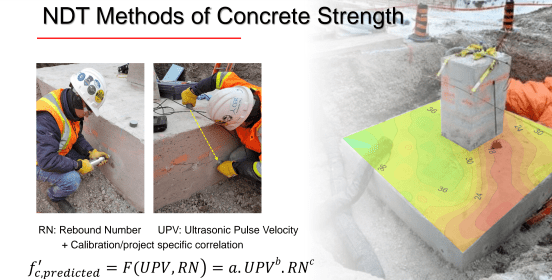
2- Poor Quality – High Permeability
When development of concrete microstructure is halted as a result of cold weather, the durability properties might be affected. For example, concrete permeability might negatively get impacted by cold temperatures.
Engineers can use non-destructive testing methods such as Surface Electrical Resistivity to evaluate permeability of concrete.
3- Cold Joints
Managing Cold Joints are more critical during the cold weather conditions. Certain delays in construction process, or use of accelerators can impact the setting time of concrete and result in major integrity issues on or around the cold joints.
Different Nondestructive Testing methods can be used to assess concrete quality, and structural integrity around the cold joint area. Ultrasonic Pulse Velocity can be used to assess quality. Impact-Echo and a customized setup for Ultrasonic Pulse Velocity can be used to estimate crack depth.

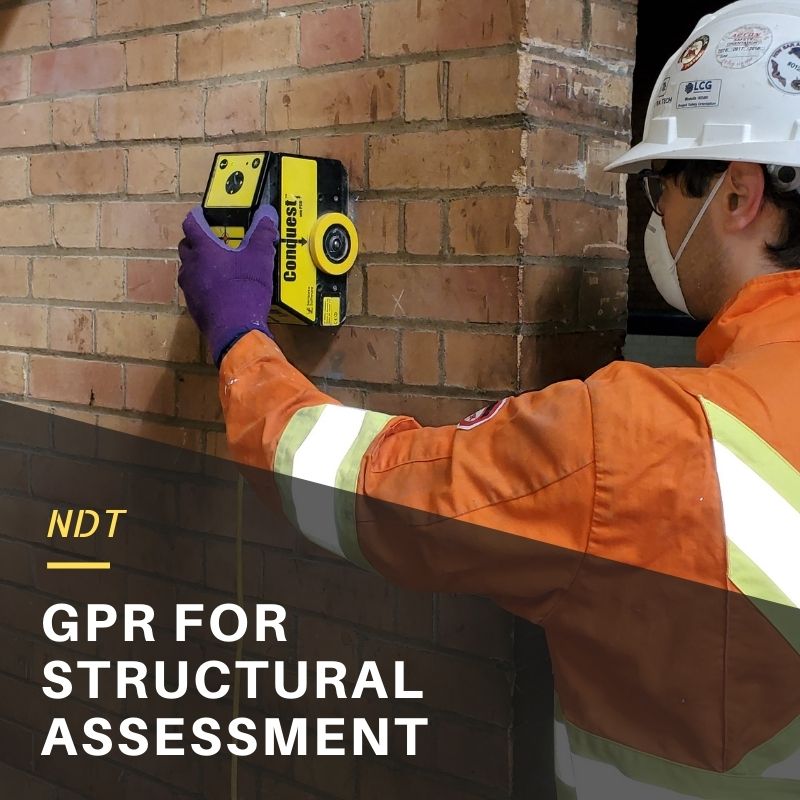


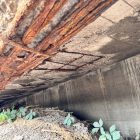

Shaheed
This's the good and useful informations for concrete casting in law temperature countries . thanks.
Thomas Haynes, P.E.
In addition the surfaces upon which concrete makes contact must be above freezing. If this is not done a layer of soft paste can result. This paste layer of damaged cement cannot ever set.
FPrimeC
Totally agree with this point. This is specially true in Canada, where we have at least two-three months of freezing temperatures.
Muhammad Abbas
Thank,s for all participants, but one thing which is click in my mind is spatial conditions.for example humidity,wind velocity, vegetation, plants. These all participate in build up a suitable atmosphere.
Protecting Concrete in Cold Weather | FPrimeC Solutions
[…] Please read here: https://fprimec.com/cold-weather-concreting […]
Haroon Raza
Monitoring of concrete is important to confirm that winter protection measures are sufficient. I supply concrete monitoring system that will cost you around $35 per pour. Please contact if interested. My cell is 6479840247.
Dr. Osama M Shawa
I worked on a small (Squash courtyard) project back in 1965 in Riyadh, at winter time, after B.Sc. Graduation.
The contractor poured concrete slab at 6 p.m., concrete mix had too much water. The ambient temprature was around 10 C, and we left the site.
Next morning I returned to the site and found the concrete cracked beyond repair.
The reason was that the temperature fell down to 4 degrees at 7 p.m. and the water within the concrete mix froze and caused the degradation of the slab.
Hence, protection against cold weather should be taken in what is considered as hot climate regions at certain time
joy
Cold joints formation could be minimized by - plan construction joints, installation pvc waterstoppers and swellable water bars.